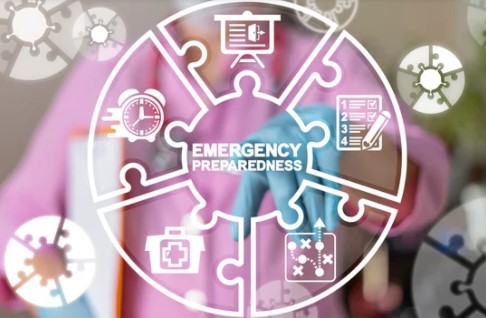- Home
- The Littlbug Blog
- Emergency Preparedness
The Littlbug Blog
Recent Posts
How Can You Prepare for Emergency Disasters ?
Posted by on
With the recent weather events in Texas, it had us thinking about the importance of disaster preparedness and what we could share to help others overcome similar disaster emergency situations. As we have seen, after the unprecedented winter storm in Texas (and many other similar events throughout the country and world over the years), many people had to survive on their own without heat, electricity, clean water, or even shelter for several days.

What does being Disaster Prepared mean exactly and what does a Disaster Kit include? Being prepared means having your own food, water and other supplies to last for several days. A disaster supply kit is a collection of basic items your household may need in the event of an emergency. We have taken the time and done the research to help you easily create a Disaster Kit and provide you with a few other helpful pointers.
First off, make sure your emergency kit is stocked with the items on the checklist below. Here you can Download a printable version of the list created by FEMA to take with you to the store. We also recommend adding a lightweight camping stove such as a Littlbug Sr or Jr. so you can boil water and warm your food during an emergency if there is a loss of utilities. Littlbug stoves are ideal as they utilize either sticks/twigs or alcohol for fuel (Littlbug Stoves work with most commercial and do it yourself alcohol burners). Keep in mind they utilize an open flame, so use proper safety measures.
A basic emergency supply kit could include the following recommended items:
- Water (one gallon per person per day for at least three days, for drinking and sanitation)
- Food (at least a three-day supply of non-perishable food)
- Battery-powered or hand crank radio and a NOAA Weather Radio with tone alert
- Flashlight
- First aid kit
- Extra batteries
- Whistle (to signal for help)
- Dust mask (to help filter contaminated air)
- Plastic sheeting and duct tape (to shelter in place)
- Moist towelettes, garbage bags and plastic ties (for personal sanitation)
- Wrench or pliers (to turn off utilities)
- Manual can opener (for food)
- Camp stove that can use both alcohol burners or twigs or sticks (Littlbug Stove)
- Alcohol for fuel source if sticks or twigs are hard to find
- Local maps
- Cell phone with chargers and a backup battery
Consider adding these additional items due to the pandemic and your family’s individual needs.
- Masks (for everyone ages 2 and above), soap, hand sanitizer, disinfecting wipes to disinfect surfaces
- Prescription medications
- Non-prescription medications such as pain relievers, anti-diarrhea medication, antacids or laxatives
- Prescription eyeglasses and contact lens solution
- Infant formula, bottles, diapers, wipes and diaper rash cream
- Pet food and extra water for your pet
- Cash or traveler's checks
- Important family documents such as copies of insurance policies, identification and bank account records saved electronically or in a waterproof, portable container
- Sleeping bag or warm blanket for each person
- Complete change of clothing appropriate for your climate and sturdy shoes
- Matches in a waterproof container
- Feminine supplies and personal hygiene items
- Mess kits, paper cups, plates, paper towels and plastic utensils
- Paper and pencil
- Books, games, puzzles or other activities for children
Once you take a look at the basic items consider what unique needs your family might have, such as supplies for pets or seniors.
We hope no one has to experience a disaster, but being adequately prepared will make a big difference for yourself and those you love.

 Loading... Please wait...
Loading... Please wait...








